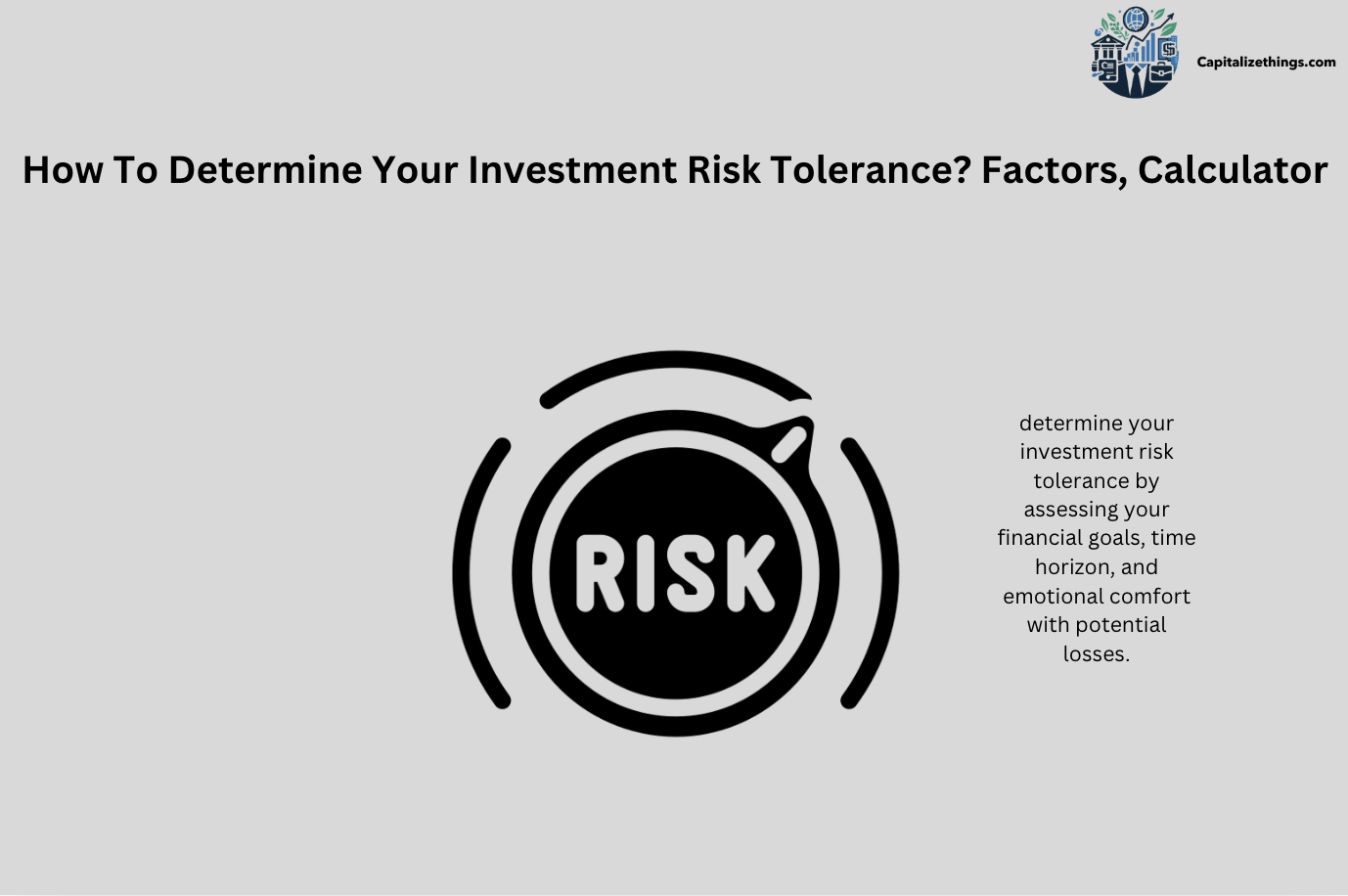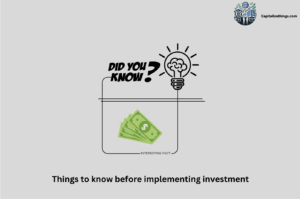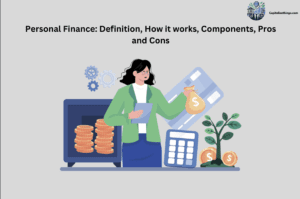A risk investment involves a higher hazard of dropping money; however, it gives the potential for more rewards. Examples include stocks, cryptocurrencies, and actual property investments. These varieties of investments are prone to fluctuations and uncertainty, making them much less predictable than safer alternatives like bonds or savings money owed. The capacity for loss is extra, but so is the opportunity for high returns. Several elements influence how many chances you must take along with your investments. Your age is the number one factor. Younger people can generally take more risks, seeing that they’ve time to get over losses.
Older traders tend to select more secure investments as they near retirement. Your economic situation additionally matters if your income is steady, savings are healthy, and you have enough money for extra threat. Tight budgets require greater caution. Your funding goals are also critical. Long-term goals, like retirement, frequently allow for riskier investments, while short-term goals might also name for extra stable, more secure alternatives. Your emotional consolation with chance performs a massive component, too. If you fear when markets drop, you might have a low tolerance for chance.
Finally, its slow horizon is essential. The more time you need to make investments, the greater chance you can take. Short-time period dreams require safer investments. Using a chance tolerance calculator is easy to gauge how many risks you can take. It asks questions about your age, financial scenario, and loss comfort. The effects assist in your chance tolerance with suitable investments. This tool helps you recognize your hazard stage higher and guides you in making intelligent selections.
What Is Risk Tolerance In Investing?
Risk tolerance in investment is how much chance you can take care of whilst you invest. It is about how comfortable you experience dropping cash. Some human beings can take a lot of danger, even as others prefer to be cautious. Risk tolerance enables deciding what types of investments fit your consolation level. If you have a high-risk tolerance, you could put money into things that match up and down fast, like stocks. If you have a low chance tolerance, you might pick out safer matters, like bonds.
Knowing your chance tolerance enables you to make better selections. This way, you could spend money in a way that feels right. It prevents you from feeling too stressed about your cash. Understanding your hazard tolerance is essential in making your funding selections.
What Are The Types Of Risk Tolerance?
There are 3 most important styles of risk tolerance. Each one indicates how much risk a person can take. Here are the sorts:
- Conservative: Conservative buyers do not want to lose cash. They choose safe investments. These investors are okay with smaller returns due to the fact they no longer need to take risks.
- Moderate: Moderate traders need stability. They take a few risks but also need safety. They wish for constant returns without massive losses.
- Aggressive: Aggressive investors are inclined to take huge risks. They invest in matters that might lose cash, but they want the danger of excessive returns. They are not fearful of brief-term losses.
Each kind fits a different stage of risk and praise. Knowing where you are enables you to pick out investments.
What Are The 3 Main Factors Of Investors Risk Tolerance?
3 factors help decide an investor’s risk tolerance. These factors guide what kind of investments fit best. Here are the factors:
- Age: Younger humans can take more dangers. They have time to recover from losses. Older investors can also decide upon more secure investments.
- Financial Situation: You can manage extra danger if you have solid profits and savings. If cash is tight, you need to avoid high-hazard investments.
- Investment Goals: Long-time-period dreams permit greater chances. Short-term desires want safer investments. Your desires assist in deciding how a good deal of hazard is proper.
These factors work together to show your risk tolerance. Knowing them helps you make smarter decisions about your money.
What Two Factors Should Your Risk Tolerance For Investing Be Determined By?
Your risk tolerance should be based on two things, your age and your financial situation. Younger people can take more risks because they have time to recover. Older people might want to be safer with their money as they need it sooner. Your financial situation matters, too. You can handle more risk if you have savings and a steady income. If money is tight, you should be more careful. These 2 factors, age and financial situation, help you decide how much risk is suitable for you.
How Do I Determine My Risk Tolerance For Investment?
To determine your risk tolerance for investment, you should think about how comfortable you are with losing money. Some people can handle significant losses because they believe they will win later. Others feel stressed when they lose even a little. You also need to look at your financial goals and how much time you must reach them. If your goal is far away, you can take more risks. If it is soon, you should play it safer. These steps help you understand your risk tolerance for investment.
How To Determine Investment Risk Tolerance In Stocks?
To determine your risk tolerance in stocks, you must reflect on how many threats you could handle. Stocks can cross up or down plenty. You can have excessive chance tolerance if you stay calm during extensive modifications. But if you are apprehensive when shares fall, you might have low danger tolerance.
You must also take into account its slow frame. If you have years to invest, you could take more significant risks with shares. You should pick safer shares or other options if you need the money quickly. These steps help you understand your stock hazard tolerance.
How To Determine Investment Risk Tolerance In Mutual Funds?
Investment risk tolerance in mutual funds is typically determined by assessing an investor’s financial goals, time horizon, and comfort level with market volatility. Mutual funds can be safer than stocks, but they still carry risk. To determine your risk tolerance in mutual funds, you need to know how much risk you want. If you pick a fund with more stocks, there is higher risk and a chance for more rewards. If you choose a fund with bonds, the risk is lower. You should think about your goals and how long you plan to invest. You can pick a riskier mutual fund if you have time to wait. Shorter timelines call for safer mutual funds.
How To Determine Risk Tolerance In Project Management?
Tot determine risk tolerance In project management, you must consider how much risk the project can handle. You can take more risks if the project has a big budget and a long time frame. If the project has tight deadlines or a limited budget, it is better to avoid risky choices.
You should also think about the people involved. If the team is skilled and experienced, they might handle more risk. If the team is new or unsure, safer choices are better. Knowing your project’s risk tolerance helps you make smarter decisions.
How To Establish Risk Tolerance?
To establish risk tolerance, start by understanding how comfortable you are with loss. Some people are okay with losing money for a chance at higher returns. Others want to avoid loss as much as possible. Next, consider your financial goals. Long-term goals allow for more risk, while short-term goals need safer options. You should also think about your income and savings. If your finances are stable, you can take more risks. By looking at these areas, you can establish how much risk is suitable for you.
When Do You Typically Have The Highest Investment Risk Tolerance?
You typically have the highest investment risk tolerance while you are more youthful. This is because you have more time to recover from any losses. As you become older, your tolerance for threats decreases. This happens because you want to guard your cash as retirement or other economic goals get closer.
When you’re just beginning to make investments, you might sense cushy taking big dangers for better returns. As time passes, you can opt for safer investments.
How Might Knowing Your Risk Tolerance Be Beneficial To You As An Investor?
Knowing your risk tolerance helps you choose the best investments for your goals. If you understand your comfort with risk, you can pick investments that match your needs. For example, a higher-risk investment could help you reach your goal of long-term growth. If your goal is short-term, safer investments might be better.
Knowing your risk tolerance also keeps you from feeling stressed when markets change. You will be better prepared to stay on track and reach your financial goals.
How To Calculate Investment Risk Tolerance?
To calculate your investment risk tolerance, ask yourself how you feel about losing money. Some people can handle big losses, while others cannot. Next, look at your financial goals. Longer goals allow for more risk, while shorter goals need safer options. You should also think about your financial situation. A steady income and savings can help you take more risks. Finally, an online risk tolerance calculator can be used to get a clear result. The calculator below can help you estimate your investment risk tolerance.
Investment Risk Tolerance Calculator
What Is an Investment Risk Level Chart?
An investment risk level chart helps show how risky different investments are. It lists investments from the safest to the most dangerous. For example, cash and savings accounts are the safest, while stocks and cryptocurrencies are among the riskiest. This chart helps you understand which investments match your risk tolerance. Using the chart, you can pick investments that fit your goals and comfort level with risk.
How Do You Determine Acceptable Risk?
To determine acceptable risk, start by asking how much loss you can handle. If you can accept losing a significant amount for a chance at bigger gains, you have a high acceptable risk. You have a low acceptable risk if you cannot afford to lose much. You also need to think about your goals and timeline. Longer timelines allow for more risk. Shorter timelines call for safer choices.
When Do You Typically Have The Highest Investment Risk Tolerance?
Typically, you have the highest investment risk tolerance when you’re young and have a long investment horizon ahead of you. This is because you’ve got more time to recover from any losses. You could want to be extra cautious with your investments as you age. When you’re young, you might sense cushy taking significant risks for the danger of high returns. As you get older, you might opt for safer alternatives.
Is It Better To Have High Risk Tolerance Than Low Risk Tolerance?
Whether excessive or low risk tolerance is higher depends on your goals and comfort. High hazard tolerance can lead to more significant rewards but also larger losses. Low danger tolerance means smaller rewards but also less chance of dropping cash. If you are cushy with threat and feature time, high hazard tolerance can be higher. Low danger tolerance can also fit your needs if you want safety.
What does Moderate Risk Tolerance Mean?
Moderate risk tolerance means you are comfortable with a few threats but no longer need an excessive amount of them. People with slight hazard tolerance balance hazard and safety. They also invest in shares and ally hold safer options like bonds. This method helps them grow their money without taking up excessive risk. Moderate risk tolerance suits folks who need boom but also need some security.
What Is The Pyramid Of Investment Risk?
The pyramid of investment risk is a way to show how volatile investments are. At the bottom of the pyramid are the most secure investments, like cash and bonds. These have low risk; however, they have low returns. In the middle are mild-danger investments, like stocks. At the top are the riskiest investments, like cryptocurrencies. This pyramid enables you to notice which investments shape your risk tolerance.
What Is An Example Of Investment Risk Tolerance?
An example of investment risk tolerance is someone saving for retirement. They will choose risky investments like stocks if they’re younger because they have time to recover from losses. They could select more secure assets like bonds to defend their savings if they are close to retirement. Their danger tolerance changes as their desires and timelines change.
What Is An Example Of Low-Risk Conservative Investment?
An example of low-risk conservative investment is a central authority bond. Government bonds are loans that buyers deliver to the government, and the government has the same opinion about paying back the money with interest after a set length. These bonds are considered because governments, especially stable ones, are probably to pay off their debt.
Another conservative choice is a certificate of deposit (CD). With a CD, you supply your money to a financial institution for a set time, and they pay you interest. CDs are very secure, given that banks are insured with the aid of the authorities. Both investments offer decreased returns but are considered safer than shares or actual estate.
How To Measure the Risk Appetite Of Investors?
To measure investors’ risk appetite of investors, you start by looking at their willingness to take risks. This includes how much loss they are comfortable with for potential gains. One way to measure this is through questionnaires or risk tolerance assessments. These tools ask about financial goals, investment timeframes, and reactions to market changes. The answers help to gauge how much risk an investor is willing to take. Investors can also measure their risk appetite by reviewing past decisions.
How they handled market ups and downs in the past gives clues about their comfort with risk. Investment goals and time horizons also impact risk appetite. Long-term goals allow more risk, while short-term ones require a cautious approach. Understanding risk appetite helps investors make better choices.
Maximize your portfolio’s performance through our data-driven risk appetite analysis. Connect with our team at CapitalizeThings.com or call +1 (323)-456-9123 to schedule a complimentary 15-minute consultation with our seasoned advisors.
What Is The Risk Appetite Statement Tolerance?
A risk appetite statement tolerance is a formal document outlining the risk level a company or investor is inclined to accept. It defines how many threats are appropriate for accomplishing precise dreams. The assertion consists of recommendations on ideal danger tiers for unique sports varieties, ensuring that selections align with an agreed-upon risk stage. This facilitates constant decision-making across a corporation or portfolio.
Risk tolerance, however, refers to the actual quantity of chance an investor or corporation can handle. The risk appetite statement affords an overarching framework, while danger tolerance relates to the limits set within that framework. Both help traders and organizations understand what is appropriate and ensure that dangers are appropriately controlled.
How Can We Help You With Investment Risk Tolerance?
CapitalizeThings.com will let you figure out your investment risk tolerance by offering assets and advice. By understanding your hazard tolerance, you could make smarter funding selections. This will help you fit your comfort stage with the right funding choices. The equipment and courses on the site display how many threats you are snug with and how that fits into your funding desires. Understanding your hazard tolerance is vital as it helps you pick the right mix of investments, stocks, or bonds based on your consolation with chance.
Using the capitalizethings.com sources, you can create a funding plan that fits your tolerance, protects your price range, and enables you to grow your money accurately. In this manner, you are more likely to reach your dreams even while keeping off useless pressure from market modifications.
Do High Risk Investments Pay More?
High-risk investments often pay more, but they also come with bigger risks. Here is a look at three different portfolios and their risk levels:
| Portfolio Type | Risk Level | Example | Potential Return |
| Conservative Portfolio | Low Risk | Government Bonds, CDs | Lower returns, more stable |
| Moderate Portfolio | Medium Risk | Mix of Bonds and Stocks | Balanced returns |
| Aggressive Portfolio | High Risk | Mostly Stocks, Real Estate | Higher returns, more risk |
In a conservative portfolio, you keep your money safe with bonds and CDs but get smaller returns. In a moderate portfolio, you balance safe options and stocks to grow your money steadily. In an aggressive portfolio, you take more chances with stocks but could lose money if the market goes down. High-risk investments can pay more, but losing is always possible.
What Is The Difference Between Risk Tolerance And Risk Capacity?
Risk tolerance and capability are vital ideas in investing; however, they are special. Risk tolerance is the number of risks you feel comfortable taking. Some people are adequate at taking massive risks, even while others need to be safe. Your feelings and character are out of your tolerance of thread tolerance. You probably have low threat tolerance if you are concerned about losing cash.
On the other hand, if dropping no longer causes problems for you, you would possibly have excessive chance tolerance. Risk capability is how much of a hazard you could have the funds for. It is based totally on your monetary situation. You cope with extra danger if you have lots of savings and constant profits. If your budget is tight, your risk capability is low. Even if you experience a cushy hazard, you must now not take extra threats than your financial situation permits. It is important to balance both chance tolerance and hazard capability.
| Risk Tolerance | Risk Capacity |
|---|---|
| Based on emotions | Based on financial situation |
| Can handle more or less risk | How much risk you can afford |
| Changes with personality | Changes with financial health |
Why Would An Investor Be Willing To Take High Risk?
Investors are willing to take excessive risks because they want bigger rewards. High-danger investments, like shares or actual estate, offer the danger of extra money, but they also come with the threat of loss. Some investors accept as true that by taking greater chances, they can attain their financial desires faster. They are assured of taking on greater risk if they have time and can have the funds to lose. Another reason is that younger buyers have greater time to get over losses.
Since they are not close to retirement, they can take more chances with the hope of developing their cash. People with a strong monetary base additionally feel greater steady whilst taking risks. They recognize that even if they lose some money, they have a backup to defend them.
Which Type Of Investor Is Willing To Take High Risk?
Investors inclined to take high risks are often aggressive investors. These investors are looking for big rewards and are okay with losing money. Aggressive buyers could spend money on shares, startups, or actual estate, wherein the capacity for benefit is excessive, but the risk of loss is also huge. Young buyers are any other institution that could take undue risks. Since they have more time before they need the cash, they can take chances on risky investments.
If the market is going down, they’ve time to wait for it to return up. Finally, wealthy traders also take excessive risks. With a stable economic foundation, they can have the funds to lose cash in exchange for a hazard at huge profits.
What Are The Medium Risks Investments?
Medium-risk investments provide a balance between protection and boom. Examples include mutual funds and trade-traded price ranges (ETFs). These options are much less risky than shares but offer higher returns than financial savings accounts or bonds. Investors can diversify their money across numerous companies, reducing the danger. Dividend shares are in every other instance. These shares pay regular profits but are more solid than high-hazard shares. Real property can also be considered for medium risk.
Buying assets for hire or resale offers a chance to grow wealth, even though it incorporates some threats. Medium-threat investments are healthy folks who want moderate increases without taking significant risks. These investments are desirable for people with a medium risk tolerance who want a steady boom.
What Are High Risk Investments?
High-risk investments can carry huge gains but also convey a high possibility of losing money. Stocks in new or growing corporations are an instance. These companies can proliferate; however, they can also fail. Cryptocurrencies are any other high-threat preference. Prices alternate fast, and it’s far harder to expect destiny. Investing in startups is likewise risky.
While some startups prevail and produce massive returns, many fail, main to losses. High-risk investments are for people with excessive chance tolerance. They are inclined to lose cash for a chance at extra rewards. These investments are not appropriate for all and must be treated carefully.
How Can Too Little Risk Affect Your Investing Experience?
Insufficient risk-taking in investment strategies can significantly impede wealth accumulation and financial goal attainment. Choosing overly conservative investments like low-yield bonds or savings certificates provides minimal security while failing to generate substantial returns. This cautious approach exposes portfolios to inflation’s erosive effects, gradually diminishing purchasing power. As prices escalate, risk-averse investors often find their capital inadequate for future financial needs.
Excessively prudent investment philosophies hinder the achievement of ambitious financial goals. Individuals seeking early retirement may find their objectives unattainable when investment returns lag behind inflationary pressures and fail to produce sufficient capital growth. The compounding impact of consistently subpar returns severely limits long-term wealth creation, leaving investors unprepared for major life events or unexpected financial challenges.
While risk management is crucial, an imbalanced approach avoiding calculated risks proves as detrimental to financial well-being as excessive speculation. Achieving equilibrium between risk and reward is essential for developing a robust, growth-oriented investment strategy aligned with long-term financial objectives.
How Can Too Much Risk Affect Your Investing Experience?
Taking an excessive amount of risk can lead to big losses. When you invest in high-danger options, like positive shares or cryptocurrencies, you’ve got the risk of massive rewards. But, if these investments fail, you can lose loads of money. If you aren’t organized for this, it is able to cause pressure and harm your financial situation.
If you’re taking on excessive risk, you could also leave out more secure gains. It is vital to balance excessive chance and occasional hazard investments. Too many chances can damage your lengthy-term financial plans if the losses outweigh the gains.
How Aggressive Should My Portfolio Be?
How aggressive should your portfolio be, is the question whose answer rely upon your dreams and luxury. You could afford to be more assertive if you are younger and saving for a protracted time period goal. This method places extra cash into shares or excessive-risk options. These picks have a higher capability for boom but come with higher dangers. If you are close to retirement or need your money quickly, your portfolio must be less competitive.
You need to recognize more secure investments like bonds or savings money owed. Balancing your portfolio based totally on your needs and timeline enables you to reach your goals without excessive danger.
What Is The Risk Profile Of A Person?
A person’s risk profile shows how much threat they can cope with. It is primarily based on their age, monetary situation, and comfort with dropping cash. Younger humans with lengthy-time period goals often have better danger profiles. This method can take greater threat because they have time to recover from losses.
People with steady earnings and financial savings also tend to have higher chance profiles. Those with confined finances or who are near retirement have decreased risk profiles. Understanding your danger profile facilitates you to select investments that fit your desires and comfort with danger.
What Is The Difference Between Conservative And Aggressive Investing?
Conservative investing focuses on safety and low risk. It entails putting money into secure options like bonds or savings debts. These selections shield your cash but provide lower returns. Conservative buyers opt for gradual and steady growth through the years. They are greatly concerned about protecting their savings.
Aggressive investing, then again, takes more danger for better rewards. Aggressive investors placed extra money into shares, cryptocurrencies, or different high-hazard options. While the probabilities for larger gains are better, so are the risks of losing cash. The distinction is how much danger an investor is inclined to take.
Which Rule Is Important To Remember When Evaluating Risk?
The most important rule to remember when evaluating risk is never investing more than you can afford to lose. This means you should always consider how much money you are willing to risk. You should rethink the investment if losing that amount would cause financial trouble. Another fundamental rule is to diversify your investments.
Putting your money in different types of investments helps reduce risk. If one investment fails, others can still succeed. These rules help you manage your risk and protect your financial future.
What Are The Top 10 Reliable Investment Options For New Investors?
New investors should focus on reliable and safer investment options. Savings accounts and certificates of deposit (CDs) are the safest. They protect your money, though returns are low. Government bonds are another safe option. They offer steady returns with low risk. Mutual funds and ETFs are good choices for diversification and growth.
Dividend stocks provide regular income while being more stable than other stocks. Real estate can also be a reliable choice. Index funds offer a simple way to invest in the stock market. Blue-chip stocks are safer stocks from large companies. These options are best for new investors looking for steady growth.
Conclude:
Investment risk tolerance is prime to constructing a portfolio that suits your monetary goals and luxury degree. It enables stability, growth, and protection, ensuring you are neither aggressive nor conservative. Factors like age, earnings, and financial desires affect how many chances you need to take. By diversifying and knowing how to adjust your investments, you can avoid the dangers of taking too little or too much risk. Whether you pick low-, medium-, or high-risk investments, usually remember to align them together with your lengthy-term plans. This method helps defend your wealth even as it permits it to develop step by step over the years, creating an extra steady monetary destiny.

Larry Frank is an accomplished financial analyst with over a decade of expertise in the finance sector. He holds a Master’s degree in Financial Economics from Johns Hopkins University and specializes in investment strategies, portfolio optimization, and market analytics. Renowned for his adept financial modeling and acute understanding of economic patterns, John provides invaluable insights to individual investors and corporations alike. His authoritative voice in financial publications underscores his status as a distinguished thought leader in the industry.







